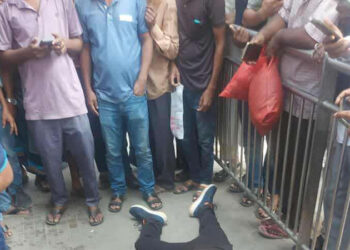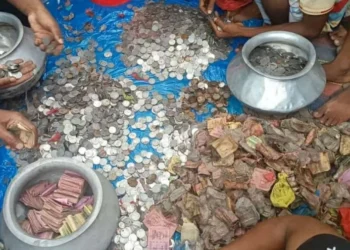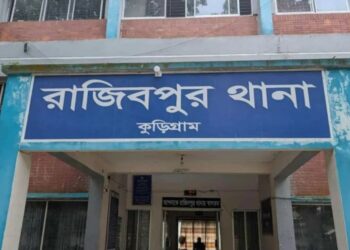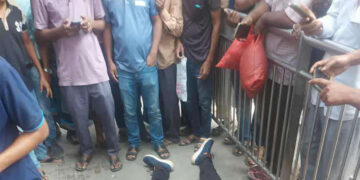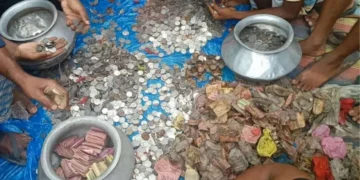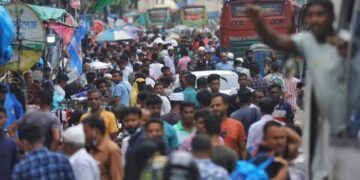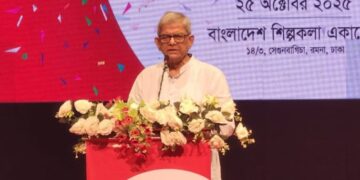Is the Claim of Higher Hilsa Production Based on Facts or Fiction?
The government says hilsa production is at an all-time high. The latest 2023–24 fisheries report even claims that hilsa production has been steadily increasing since 2001. Bangladesh is said to account for a staggering 75% of the world’s hilsa supply, securing the top global rank in hilsa production.
But if all this is true, why has hilsa become so expensive that even the fishermen who catch them can no longer afford to eat it? Why are rivers seemingly empty while data charts climb upward?
To answer these questions, The Business Standard visited multiple fish landing stations in Laxmipur, one of the hilsa-rich districts in the country. What we found there paints a very different picture.
Field vs. Figures: A Growing Gap
Fishermen, traders, and wholesalers—over 50 people—were interviewed across different sites. Their message was clear and consistent: the official statistics do not match the reality.
“There are no government enumerators here. No one comes to collect data. Not a single person,” said Md Khokon, a veteran trader at Motirhat fish landing site, which has 42 fish depots. His words were echoed by others at the ghat.
Mihir and Faruk, two fellow traders, laughed at the idea of official data collection. “We sell hilsa by piece, not by weight. No one from the government ever comes to ask us anything,” they said bluntly.
Fishermen and traders repeatedly alleged that both local and national fisheries offices are producing fabricated numbers—numbers designed to show rising hilsa production even when the rivers say otherwise.
Md Kabir Hossain, who sources hilsa from the Meghna river and distributes it countrywide, believes the numbers are inflated to justify ongoing projects. “If our district’s data is wrong, then the national numbers must be too,” he added.
At Alexander Centre Khal ghat in Ramgati—Laxmipur’s second-largest hilsa hub with 52 depots—trader Safiq confirmed there has never been any official or unofficial effort to record fish data. The same story was heard at Tankibazar, the largest site between Laxmipur and Noakhali. There, Touhid, another trader, said hilsa is sold in bundles (pon) of 80 fish and “no one ever comes to check or count anything.”
Read More: Aminul Haque: Forgetting that Shakib became an MP would be an act of betrayal
Jamal Uddin, a shopkeeper at Kotoria fish ghat for two decades, offered a similar account: “I’ve never seen anyone asking how much fish we handle. The government figures come from guesswork not from the field.”
The Pain of the Fishermen
Perhaps the most heartbreaking testimony comes from the very people catching the fish who now can’t afford to eat it.
Fishermen like Saleh Ahmed, 60, said, “They say production is up, but our nets come up empty. We barely survive. Who are they fooling?” At Talatoli fish centre, fishermen Mohsin, Belayet, and Monir agreed, saying they haven’t eaten hilsa for months because of soaring prices. “We catch the fish, but can’t afford to bring one home,” one of them said bitterly.
“If hilsa production really increased, prices would drop. We’d have more fish in the rivers,” said Monir. “But instead, we get numbers made up in air-conditioned offices far from our suffering.”
According to the Department of Fisheries, Laxmipur produced 23,000 tonnes of hilsa in FY2023–24, which breaks down to about 82 tonnes per day. But traders on the ground say that the total daily supply across all 25 landing stations barely reaches 20 tonnes. That’s a massive discrepancy.
Laxmipur District Fisheries Officer Md Billal Hossain claims that 12 enumerators collect data daily from 12 major sites. But when reporters visited these supposed sites, no enumerators were found. No forms, no counting, no interviews nothing. Just confusion and denial from those who actually trade the fish.
Invest in Hilsa Sustainability and Breeding
-
Protect Breeding Grounds:
Enforce stricter surveillance in hilsa breeding zones (especially in Chandpur, Barisal, Laxmipur) during peak breeding seasons (March–April, October–November). -
Hilsa Hatcheries and Fingerling Restocking:
Fund hatcheries and regularly restock fingerlings into rivers to ensure long-term sustainability.
If even a prominent site like Motirhat, home to dozens of depots, is left unvisited by data collectors, one must ask: where is the data coming from?
This is not just about fish. It’s about trust, transparency, and truth. When official reports paint a picture that contradicts everyday reality, it damages not only the credibility of institutions but also the livelihood of thousands.
Hilsa is more than just a fish in Bangladesh. It’s a part of our identity, our festivals, our economy and our meals. But if the people who fish it, sell it, and live by its trade say the statistics are wrong then maybe it’s time we start listening. Because if the numbers are made up, then the real story of hilsa in Bangladesh is not one of abundance but of disappearance.
Share via:










